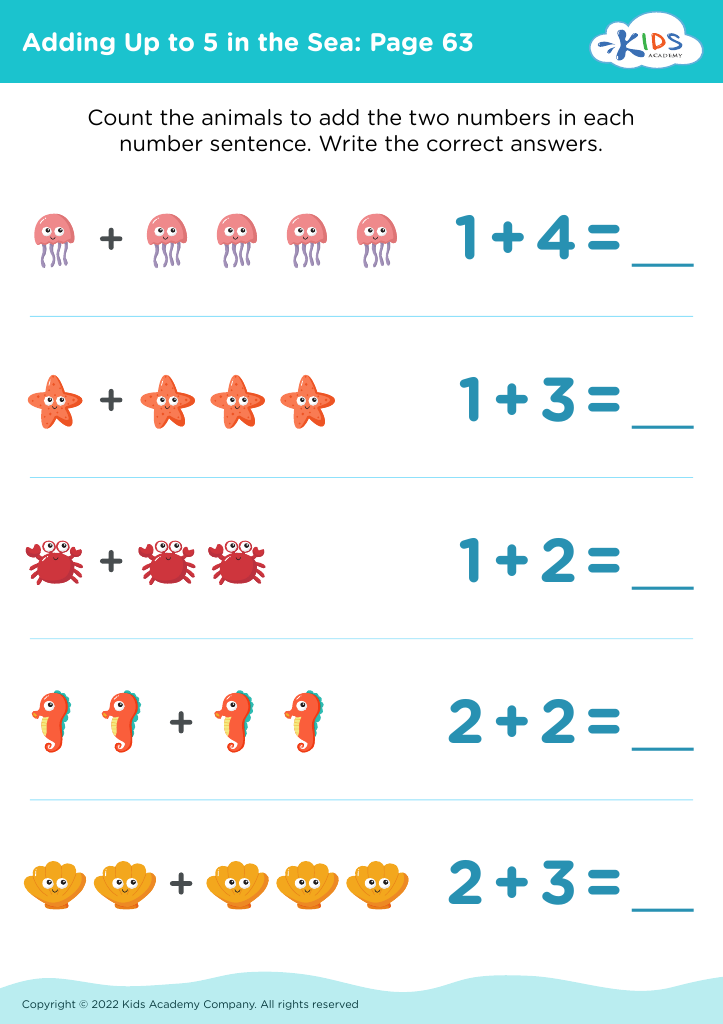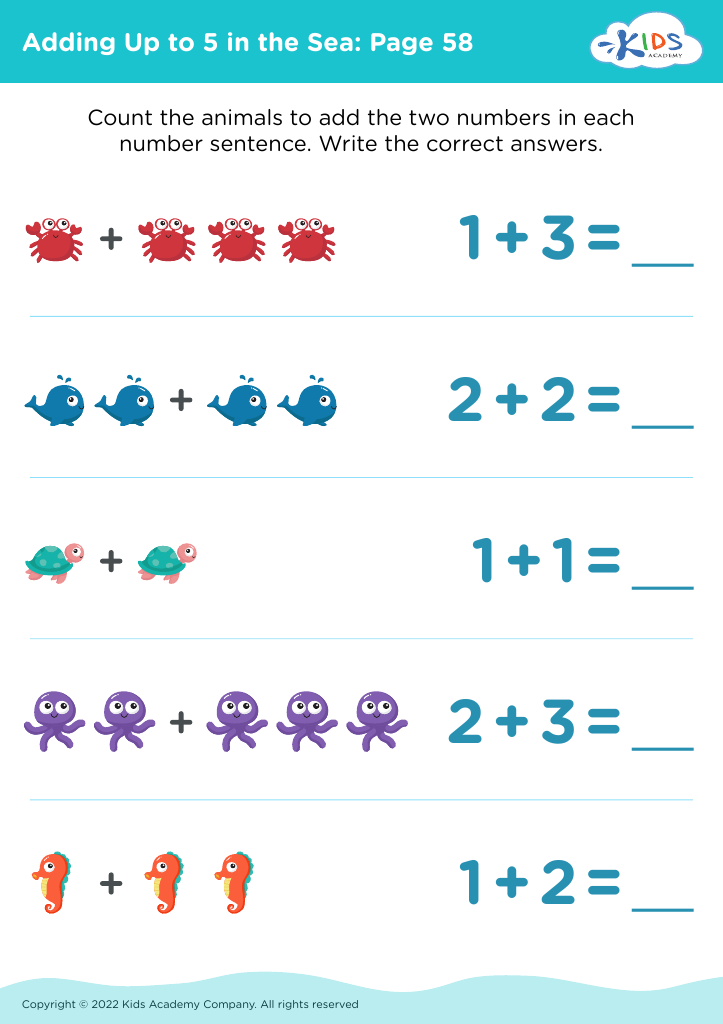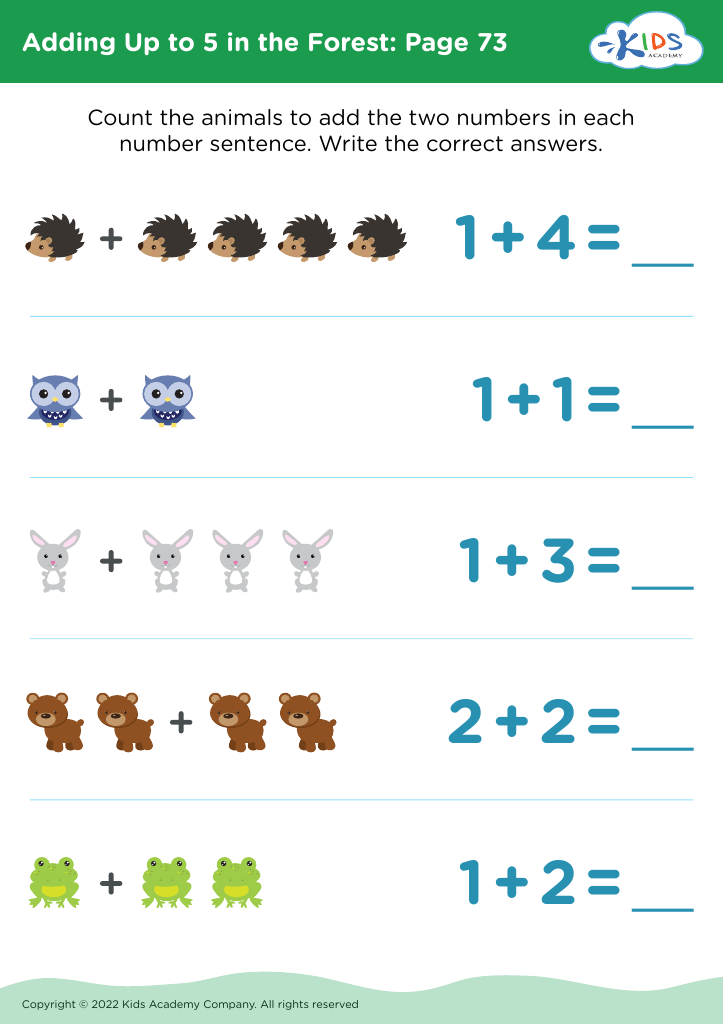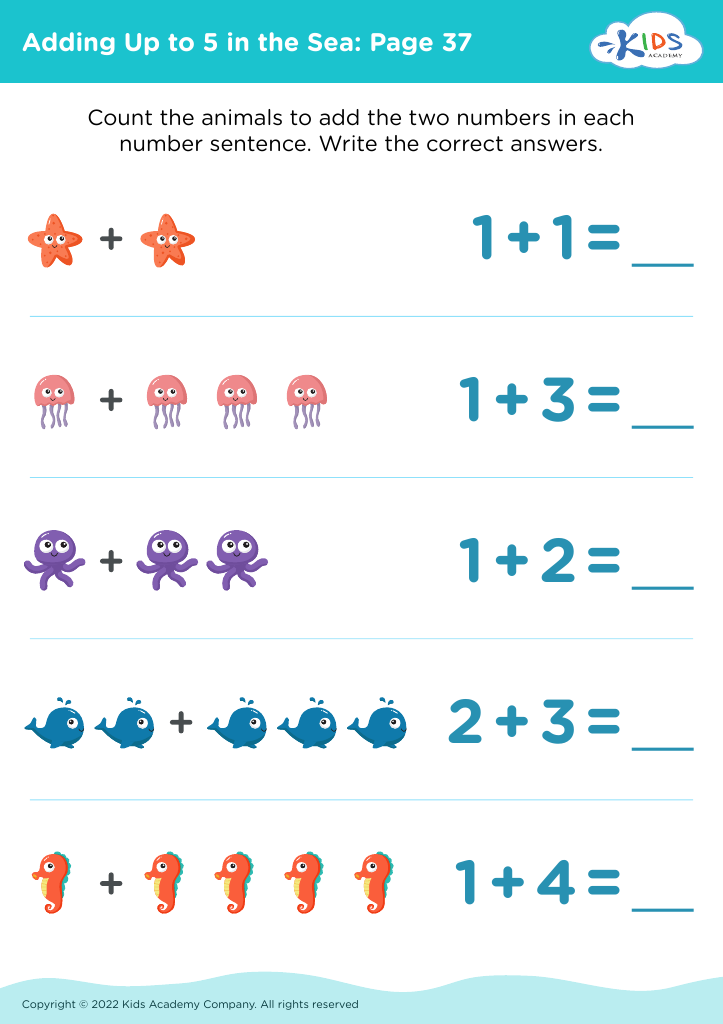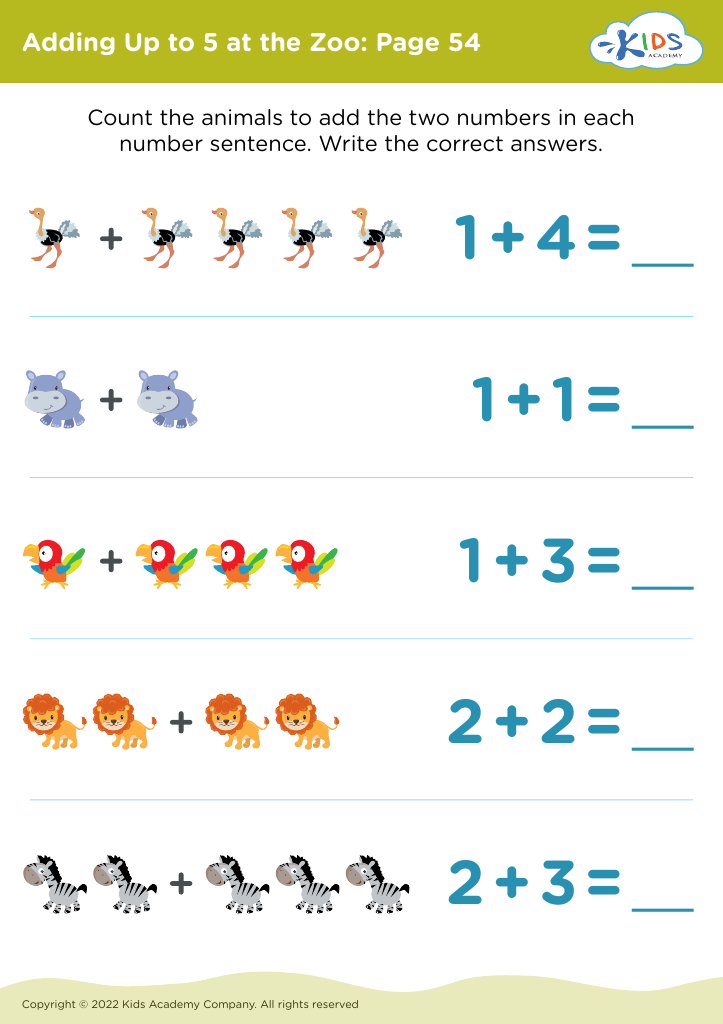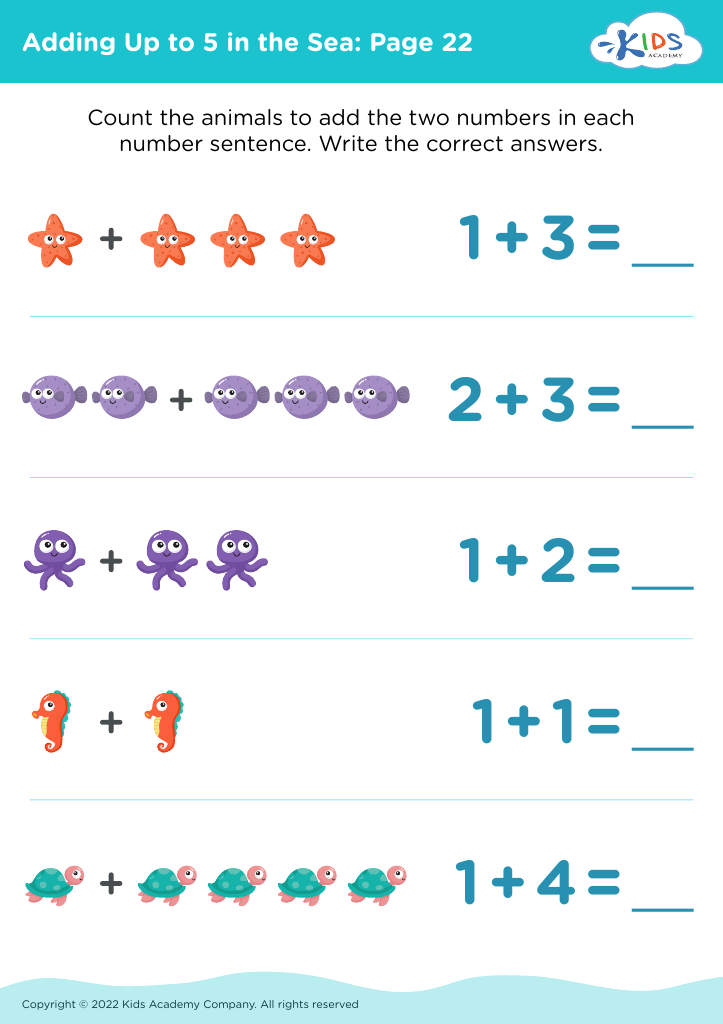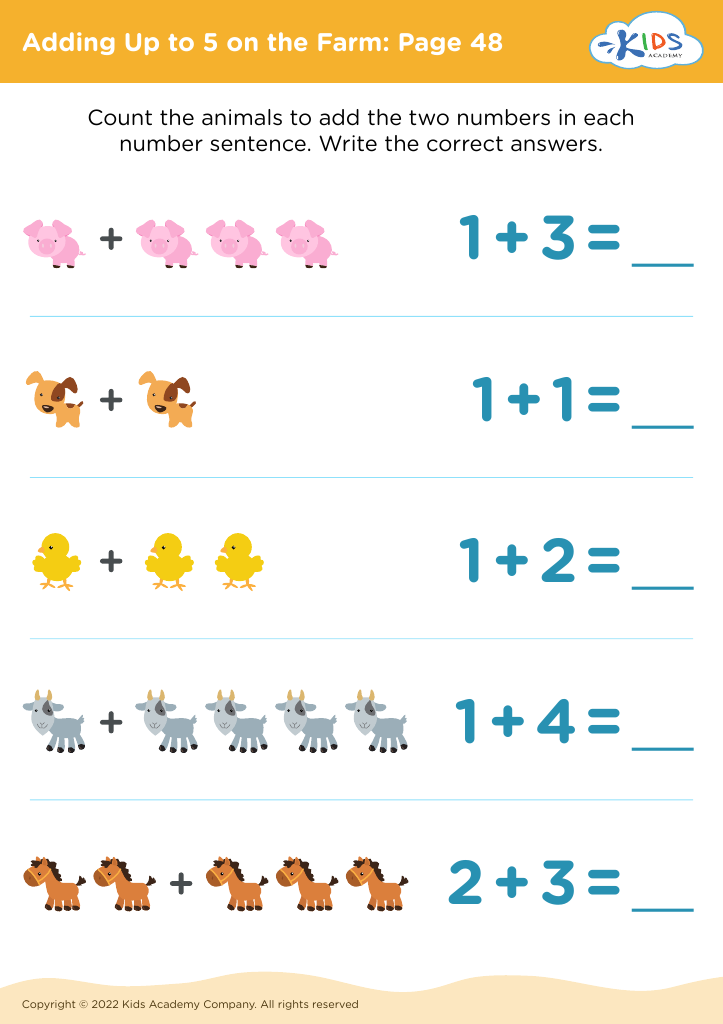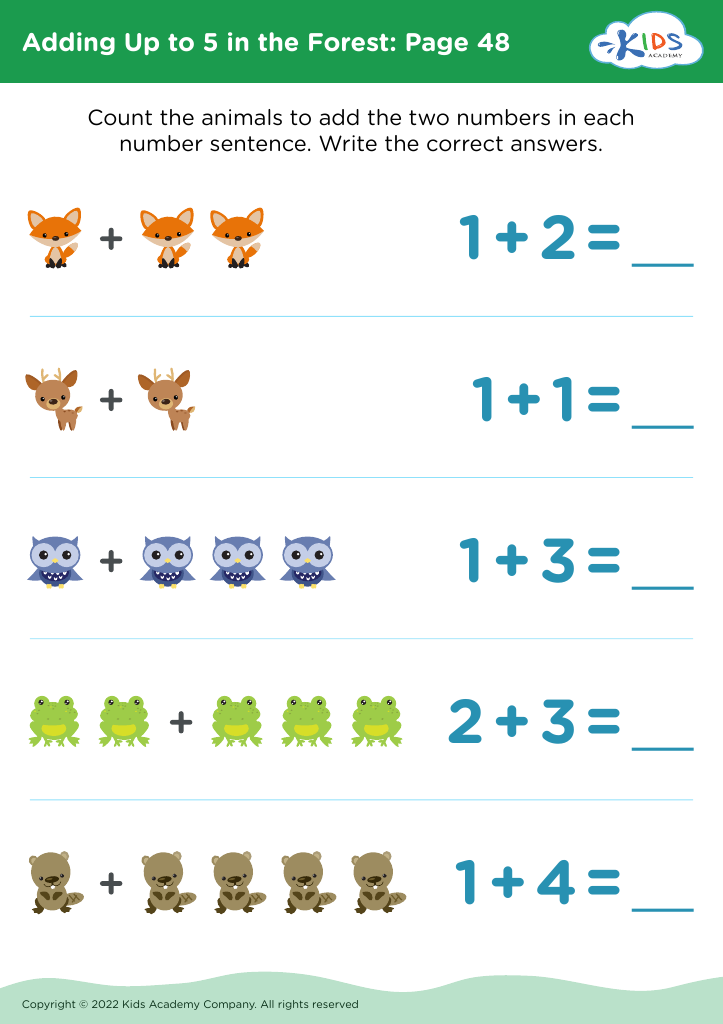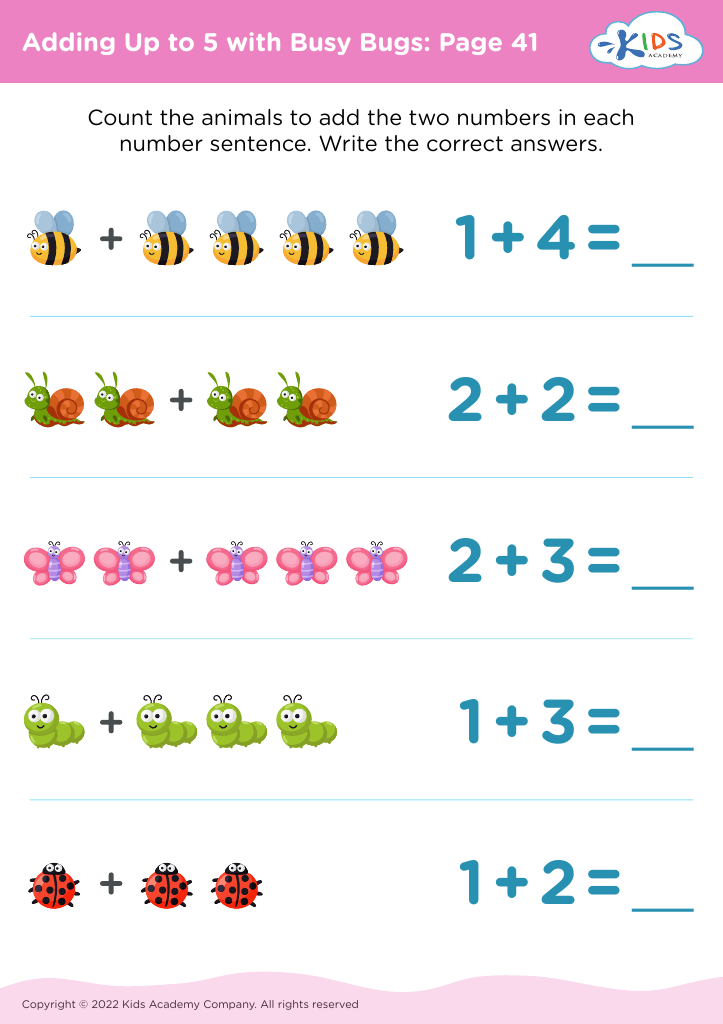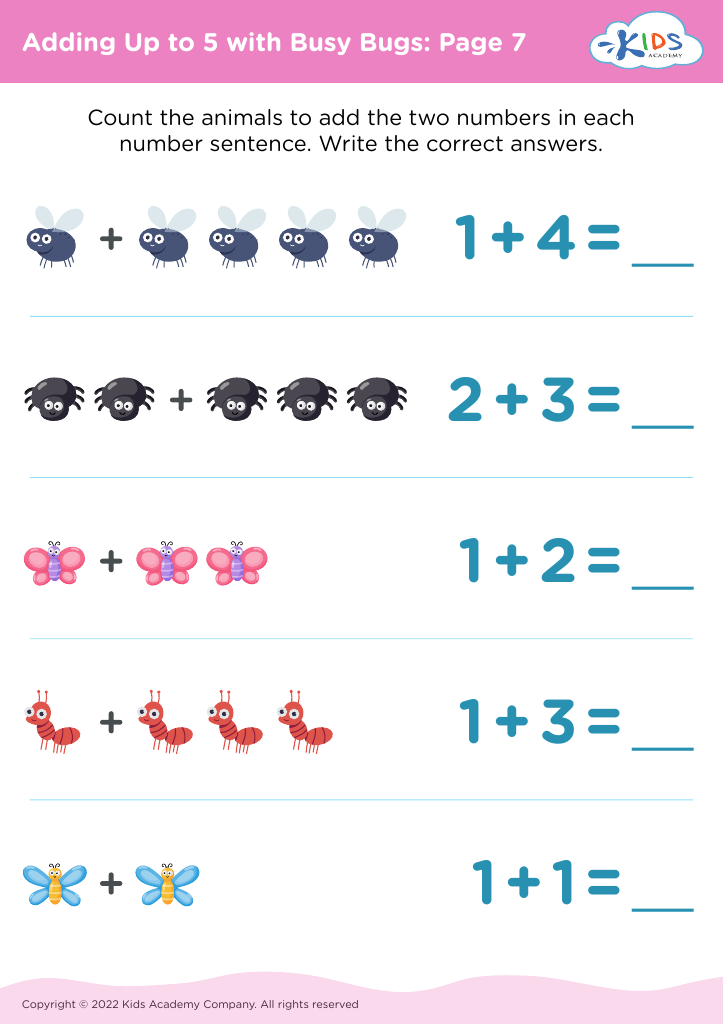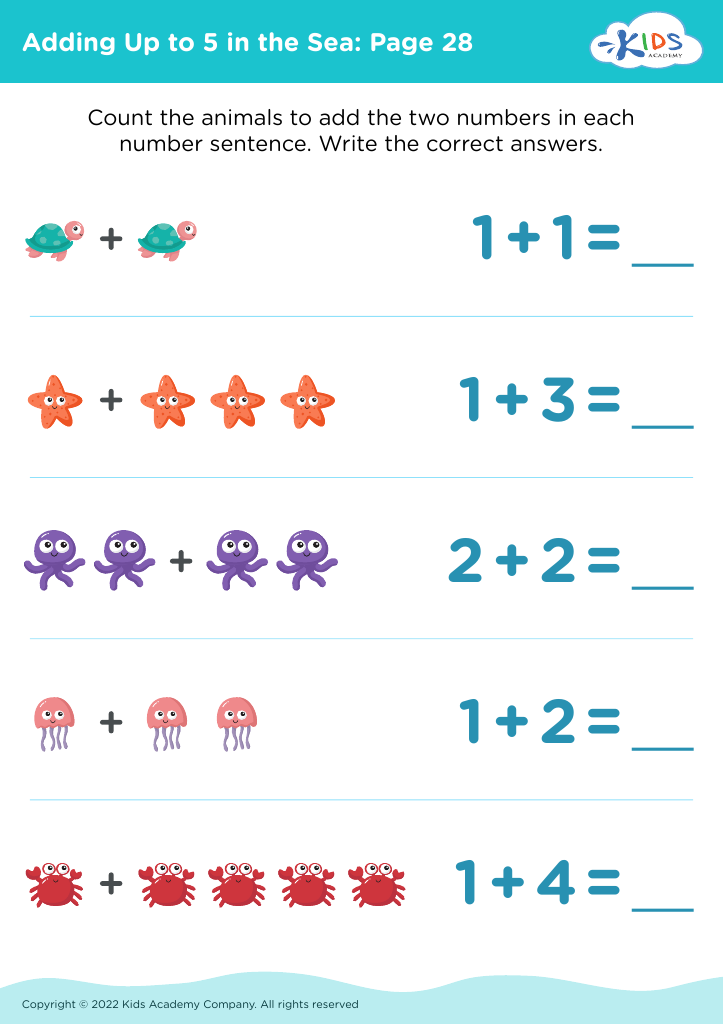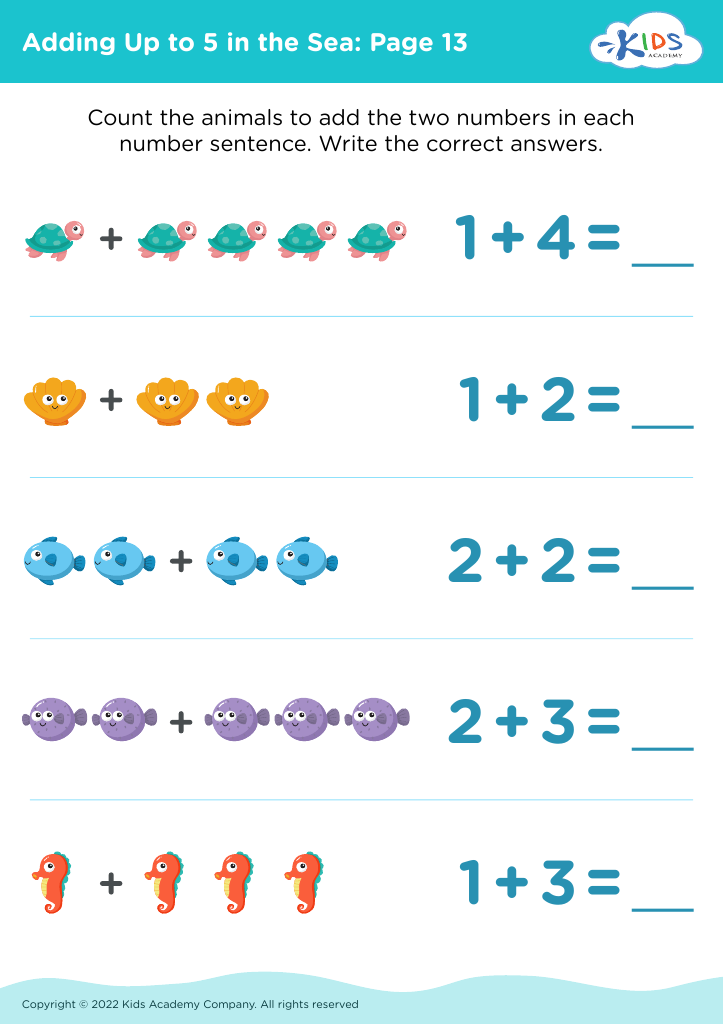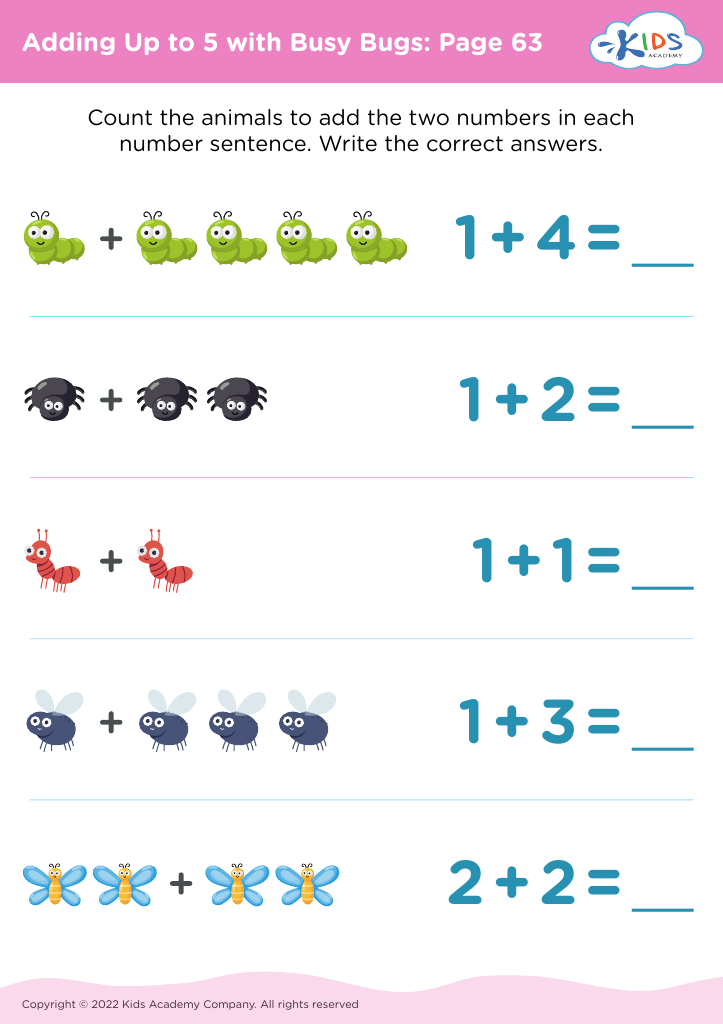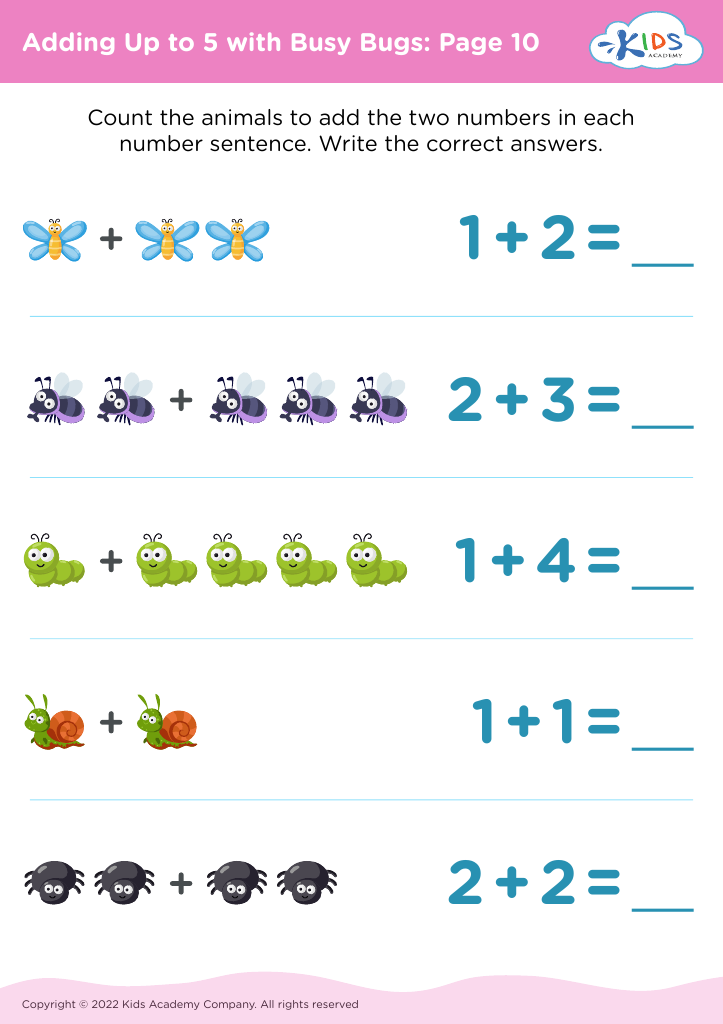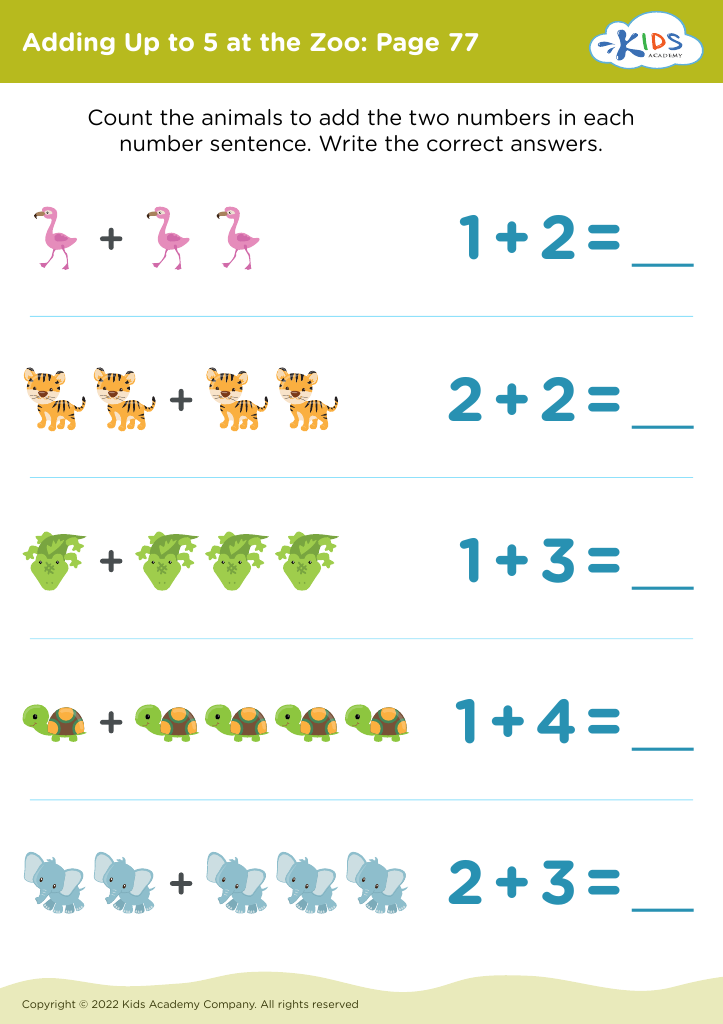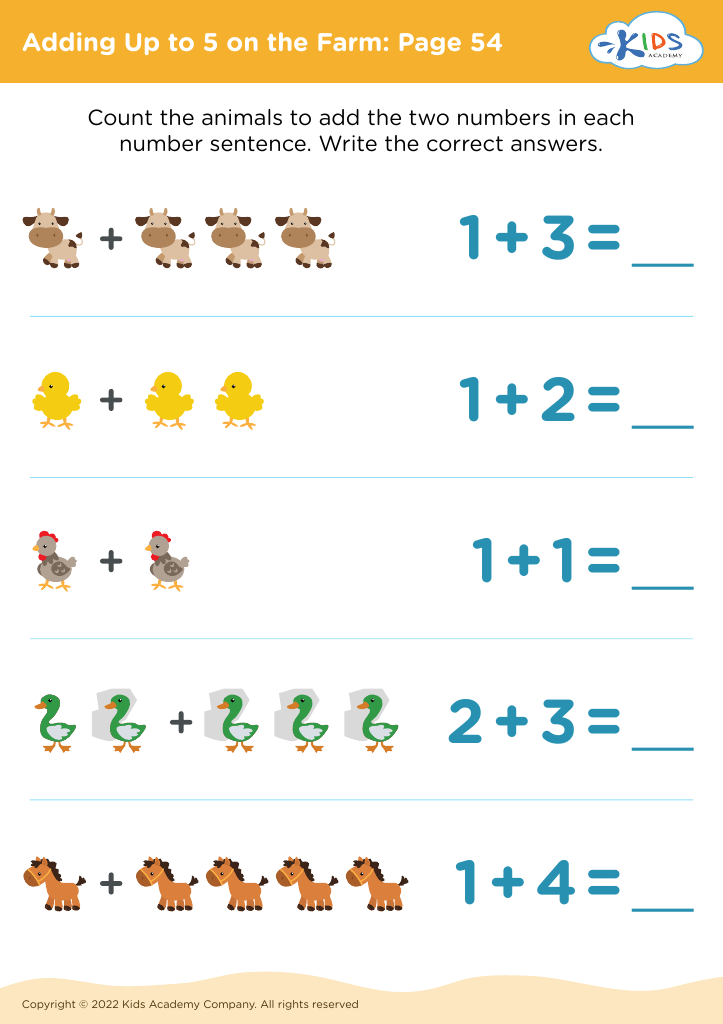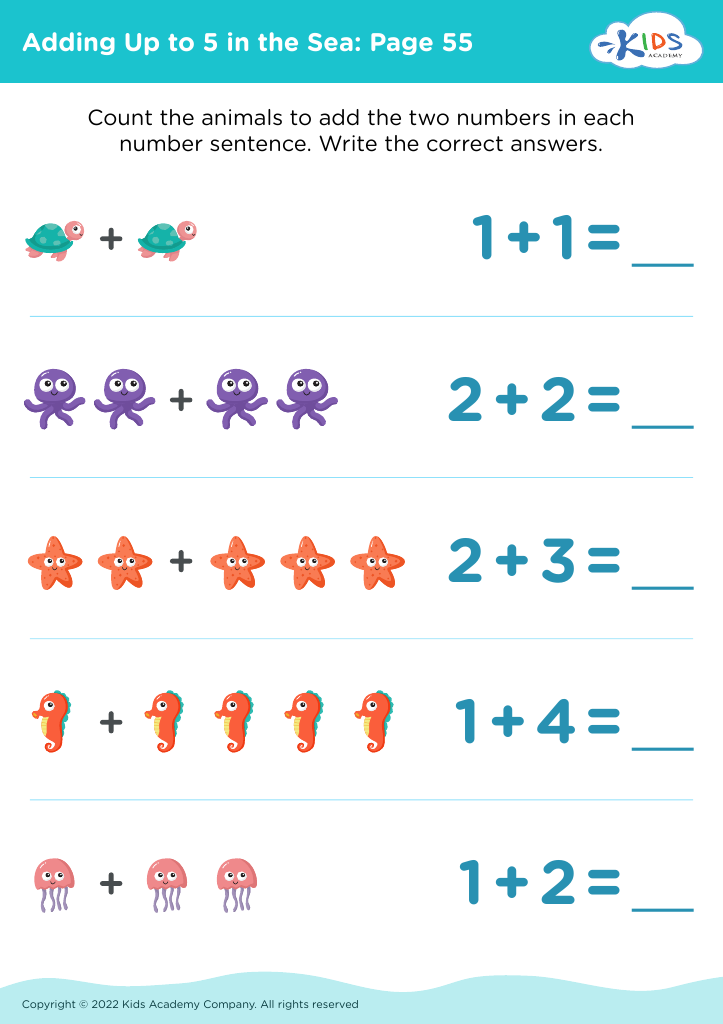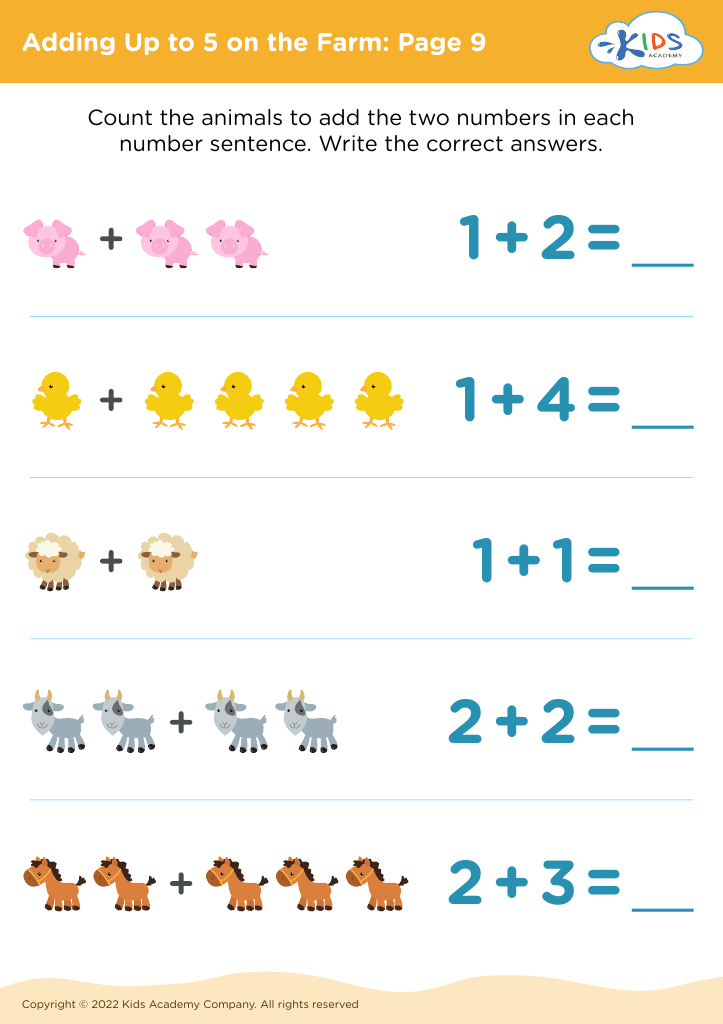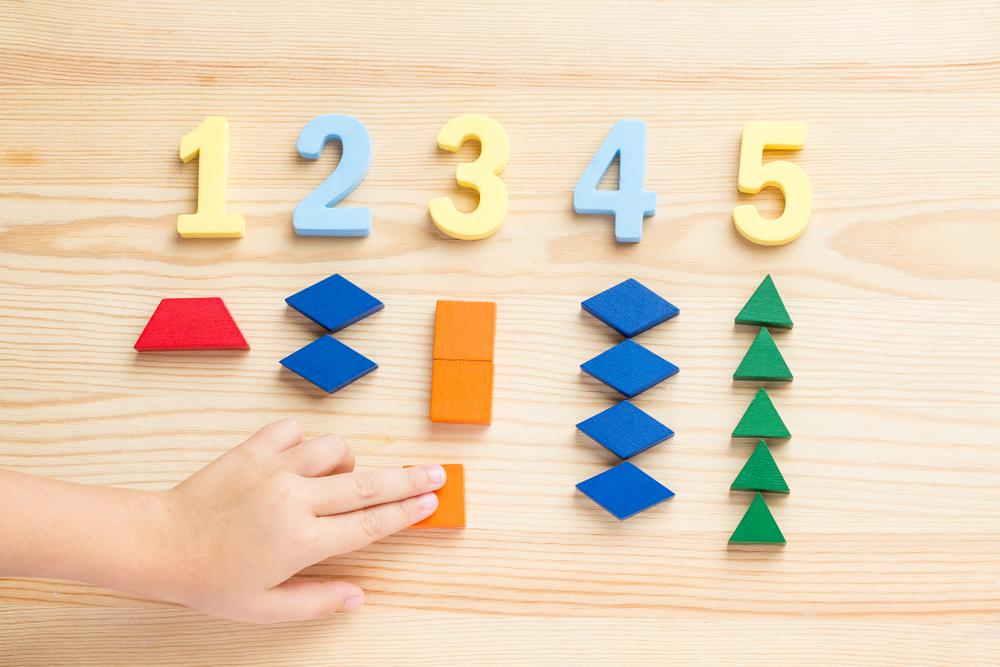Counting practice Math Worksheets for Ages 3-6
297 filtered results
-
From - To
Boost your child's early math skills with our engaging Counting Practice Math Worksheets designed for ages 3 to 6. These interactive worksheets encourage young learners to grasp foundational counting concepts through fun activities and colorful illustrations. Each printable offers a variety of exercises that promote number recognition, one-to-one correspondence, and basic arithmetic, making learning both enjoyable and effective. Ideal for home or classroom use, our resources cater to diverse learning styles and help build confidence as your child progresses. Start your little one's counting journey today and lay the groundwork for future math success with our expertly crafted worksheets!
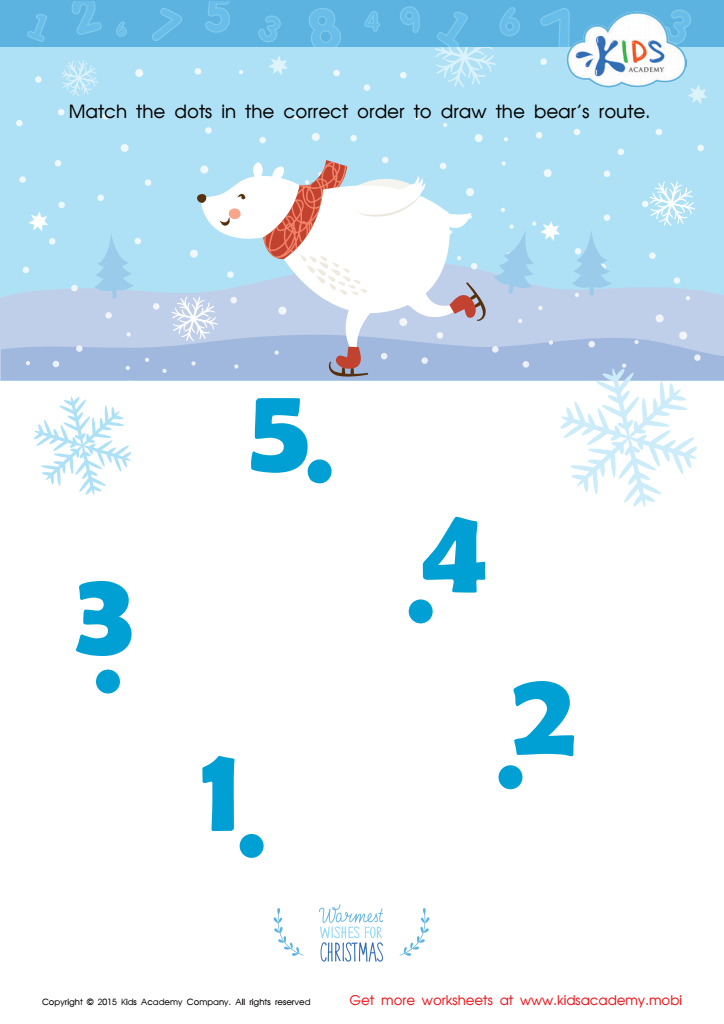

Drawing the Bear's Route by Number Worksheet
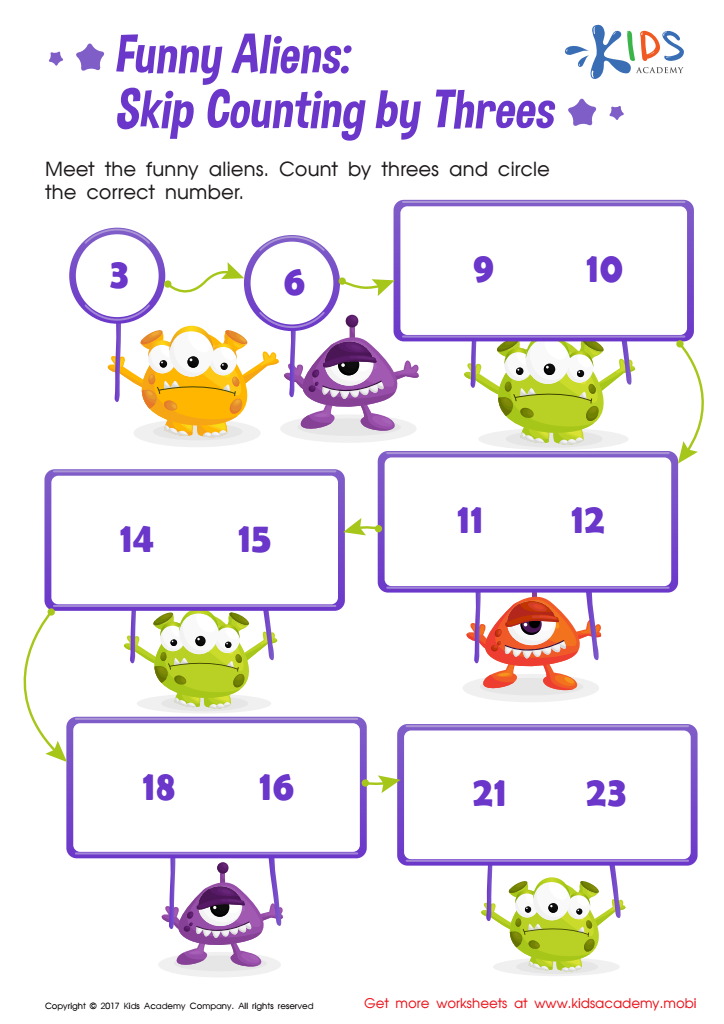

Skip Counting by 3s: Funny Aliens Printable
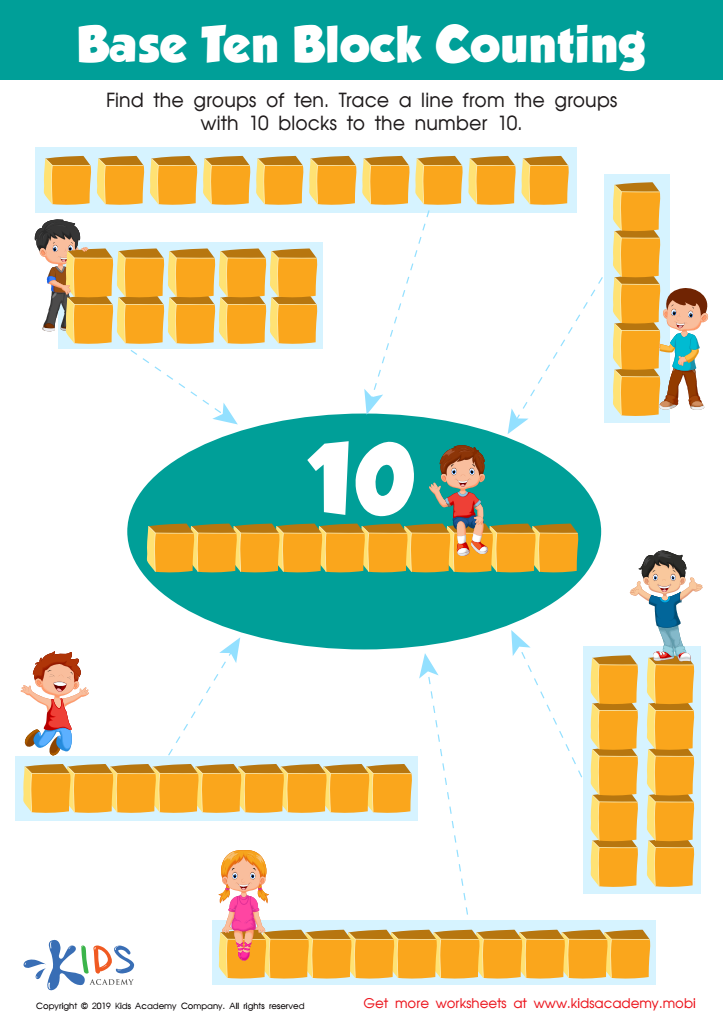

Base Ten Block Counting Worksheet
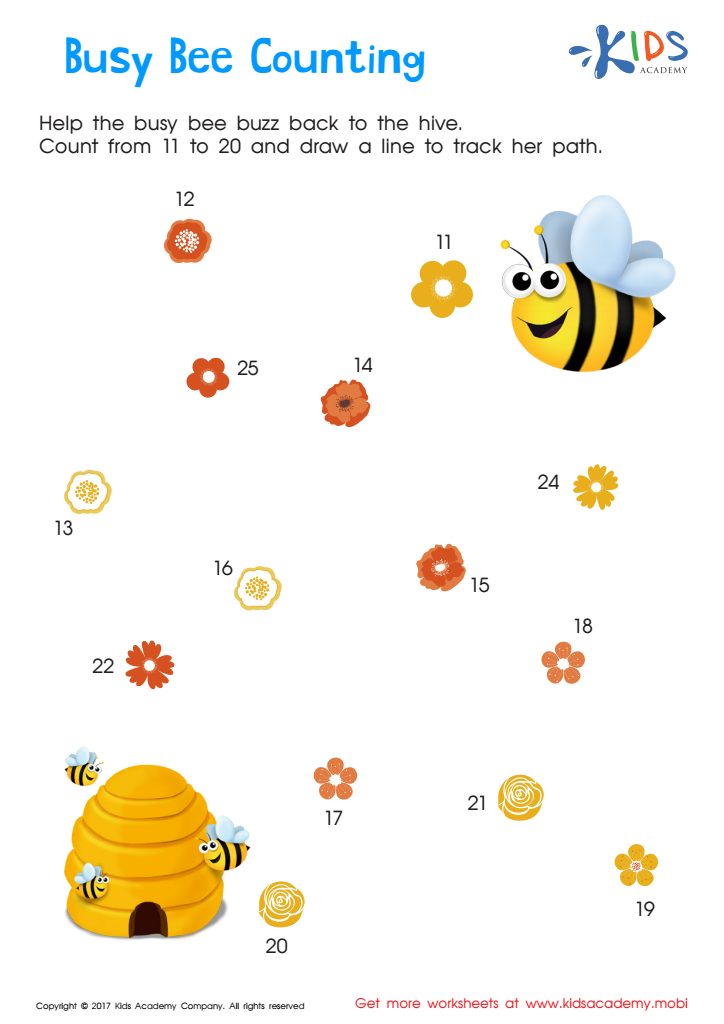

Ordering 11–20: Busy Bee Counting Worksheet
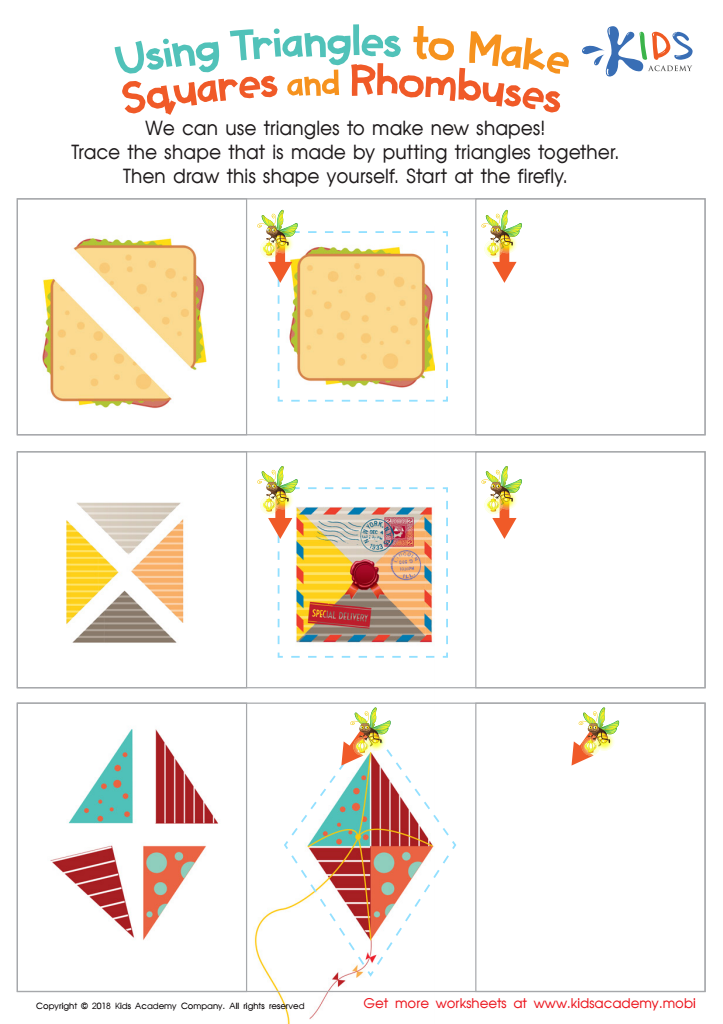

Using Triangles to Make Squares and Rhombuses Worksheet
Counting practice is fundamental for young children's mathematical development, particularly between the ages of 3 and 6. During these formative years, children's brains are highly receptive to learning concepts that form the foundation for future mathematical skills. Engaging in counting activities fosters numeracy skills, which are crucial not only for mathematical understanding but also for cognitive development.
Parents and teachers should care about counting practice because it involves more than just listing numbers; it enhances children’s problem-solving abilities, logical thinking, and even language development. Counting helps children recognize patterns and relationships between quantities, teaching them the importance of order and organization.
Regular counting practice boosts children's confidence throughout their learning journey, making them more willing to engage in mathematics as they grow older. Additionally, it provides opportunities for interactive learning, fostering social skills through group activities. With early mastery of counting, children can transition more smoothly to more complex math concepts such as addition and subtraction.
Ultimately, nurturing these early numeracy skills lays the groundwork for a positive attitude towards math, helping children perceive it as a fun and accessible subject rather than a source of anxiety in later years. Engaging children in counting adds to their holistic development and equips them with essential life skills.
 Assign to My Students
Assign to My Students

